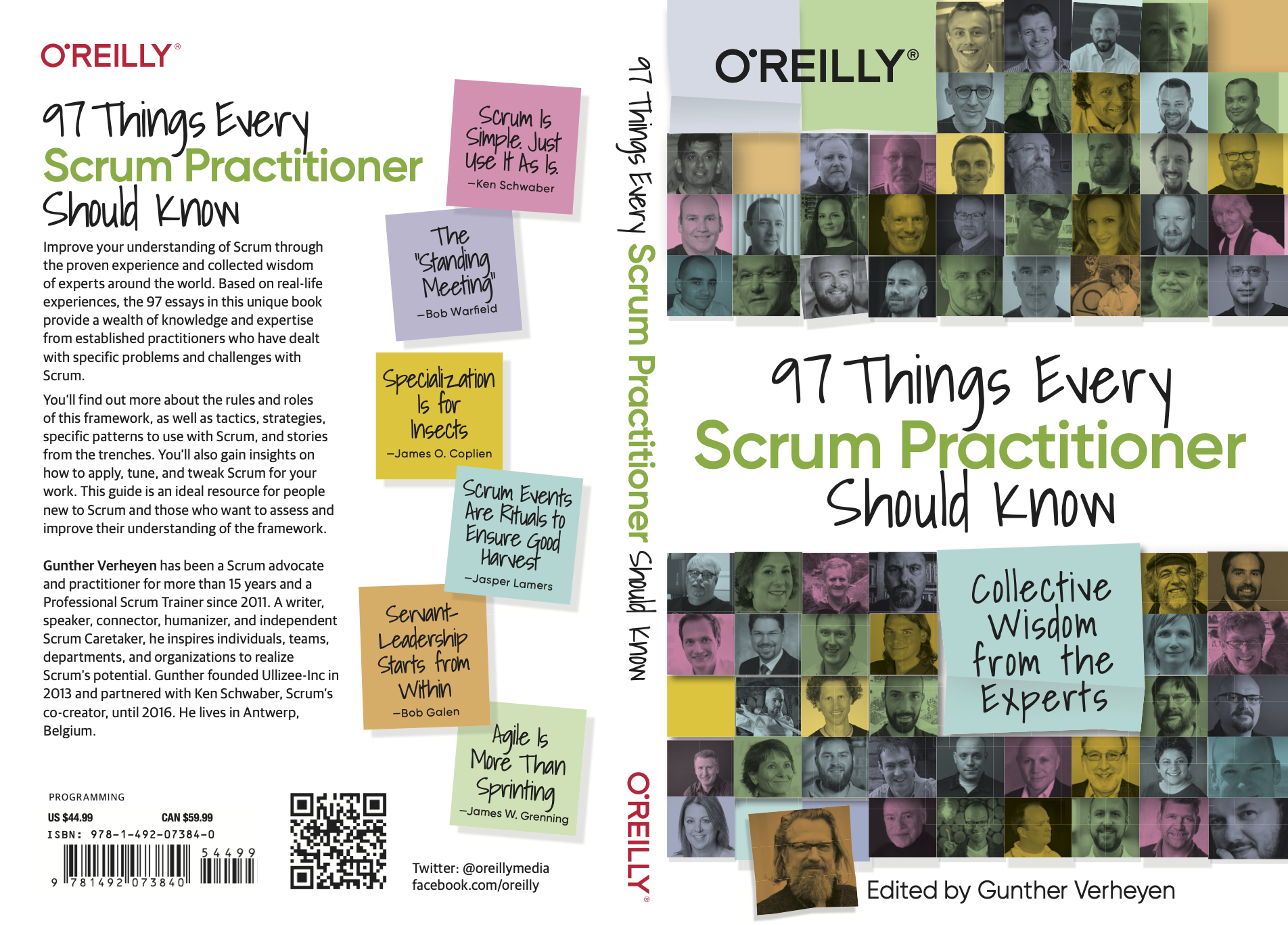"Scrum and Organizational Design in practice" is my contribution to Gunther Verheyen book "97 Things Every Scrum Practitioner Should Know" published by O'Reilly Media and resumes my latest experience as Scrum Practitioner on how to make a company's transformation implicit rather than explicit.
A company that has been around for more than 30 years, with all of its organizational habits and practices, is a much too complex system to change if you look at the whole. We did feel the need of change towards increased agility, however. We did not feel the need, nor did we have the ambition, to try to change the whole system in one large ‘Agile transformation.’ Rather, we decided to make the transformation we aim at implicit. We selected one tangible product and introduced Scrum for its further development and evolution.

Our clear ambitions were two-fold; (1) satisfying the CEO’s objectives of improving Time to Market, Quality and Customer satisfaction for the selected product and (2) revealing what should be improved at organizational level.
After one year of experimentation and discovery, including improving the understanding of Scrum of all people connected to the Product with trainings and workshops, we have found that we have substantially improved the Development Team’s focus. Not only has this led to improved quality and speed, but it has also enhanced cross-learning within the team. An important hurdle we had to take for this was getting the organization to accept that the team works now dedicated on our selected product only.
With regards to our second ambition, we have revealed important organizational impediments to Scrum. We are working hard to raising them to and generating awareness with the Board Members. Collaboration between Business and Engineering is certainly an important improvement area. Product ownership is fragmented among too many people, affecting vision and direction. Management decisions can be slow. Employees are spread too thin limiting their capacity to perform and learn from deep experiments. This is caused and worsened by the compliancy pressure on employees; their ‘success’ is measured on how they respect of internal processes instead, rather than metrics like customer satisfaction.
Our many experimentations wouldn’t have been possible without all the people seeing the value of Scrum and relentlessly contributing in many ways to our company journey towards more agility. We know the journey will be long. We are gratified over every little improvement we make.
The support and help, often politically, of one of the board members has proven crucial however. It is extremely helpful to have a promotor on your side who knows the organization inside-out, is able to open doors for us and is willing to try different approaches to help remove Impediments. It has been one of the success factors that permitted to raise the bar of experimentation at different organizational levels.
I feel we are the living evidence that introducing Scrum is not possible without impacting the organization, although Scrum has no rules on how an organization should look like.
I am curious to find out what is happening in your organization:
- What’s been the biggest impact of Scrum on your organization?
- Is there something you’re doing today that could be improved with Scrum?
- What do you think Scrum couldn’t help to achieve that you were expecting to?

If you want to explore further this book's chapter, I recently wrote a case study, published by scrum.org, "A world-leading company in secure communications uses Scrum to restore its competitive advantage" that dive deep into the experience and associated retrospectives.
Find more about me on www.collectivegenius.fr and www.collectivegenius.it
